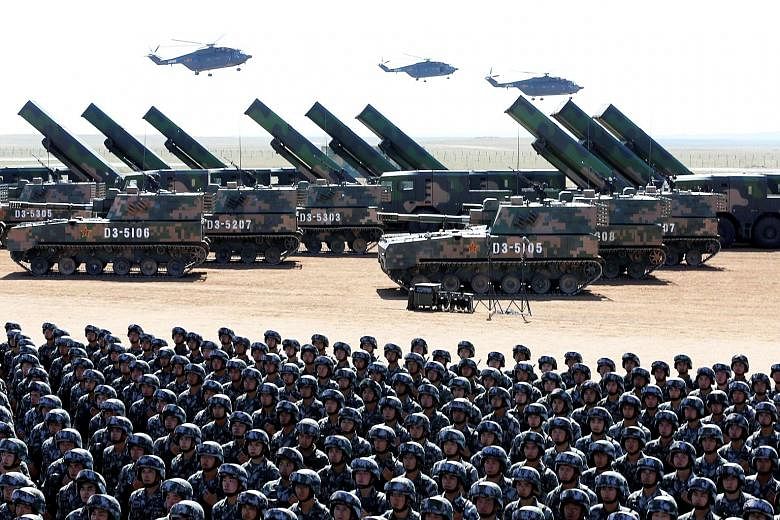Australia has called for closer regional economic and security ties in its latest foreign policy blueprint, which warned of growing instability across the Asia-Pacific as China actively challenges the position of the United States.
Releasing the federal government's Foreign Policy White Paper yesterday, Prime Minister Malcolm Turnbull said the region's rising wealth presented opportunities but was also causing uncertainty and heightened risk.
"In the past, we could safely assume that the world worked in a way that suited Australia," he said in a speech in Canberra to launch the paper.
"Now, power is shifting and the rules and institutions are under challenge. We are experiencing unprecedented prosperity and opportunity, but the liberal rules-based order that underpins it all is under greater stress than at any time since its creation in the 1940s," he added.
The first page of the 136-page White Paper, the first in 14 years, made it clear that the United States' regional dominance could no longer be taken for granted and may not turn out to be an enduring certainty.
"The United States has been the dominant power in our region throughout Australia's post-World War II history," said the paper.
"Today, China is challenging America's position."
-
Aussie blueprint: Key takeaways
-
China: The Australian government is committed to strong and constructive ties with China. But China is challenging America's position, and "navigating the decade ahead will be hard because, as China's power grows, our region is changing in ways without precedent".
US: The alliance with the US is central to Australia's approach to the Indo-Pacific. The US is increasingly questioning its own commitment to preserving its global leadership, and its dominance can no longer be taken for granted.
South-east Asia: Australia places high priority on its bilateral ties in South-east Asia and support for Asean. The government is enhancing its trade and defence ties .
Trade: Bringing China and the US into a regionwide free trade agreement will reduce economic tension and help maximise growth. The goal is to resist protectionism and for a regionwide free trade area that includes all major economies.
The paper, produced in consultation with businesses and experts, marked an attempt by Canberra to lay out a diplomatic pathway amid the risk of rising tensions between its closest security ally - the US-and its biggest trading partner - China.
"This is the first time in our history that our dominant trading partner is not also a dominant security partner," Mr Turnbull said.
The paper acknowledged that China's remarkable growth would add to Australia's prosperity, but noted that it would deliver serious potential security risks as well. It singled out the South China Sea as a "major fault line in the regional order", expressing concern at "the unprecedented pace and scale" of China's "land reclamation and construction activities" in disputed territory.
"Like all great powers, China will seek to influence the region to suit its own interests," the paper said. "As it does… we will face an increasingly complex and contested Indo-Pacific."
Reuters news agency reported that China's Foreign Ministry spokesman Lu Kang said at a regular briefing yesterday that Canberra had made "irresponsible remarks" about the South China Sea. But he also said the White Paper on the whole was a positive assessment of China's development.
The White Paper made it clear that Canberra wanted the US to continue its regional leadership, but also noted that it is Washington - under President Donald Trump, though he is not mentioned - which is questioning its own commitment to global leadership.
Experts were quick to point out that the White Paper did not provide a clear solution to how Australia can try to address the growing uncertainty caused by China's rise and the US' "uncertainty about the costs and the benefits of its leadership".
But it did signal a significant change in direction for Australia, flagging the attempt to shore up alliances across the region.
This was evident in the paper's emphasis on describing the region as the "Indo-Pacific" rather than the "Asia-Pacific". The term denotes a region encompassing the Indian Ocean and the Pacific Ocean, an effort clearly aimed at broadening the area to include India.
The paper also pointed to efforts to bolster ties with the major democracies around the region, particularly Japan, India, Indonesia, and South Korea.
An expert on Australian foreign policy from the Australian National University, Professor Michael Wesley, described the document launched yesterday as a "worried White Paper".

